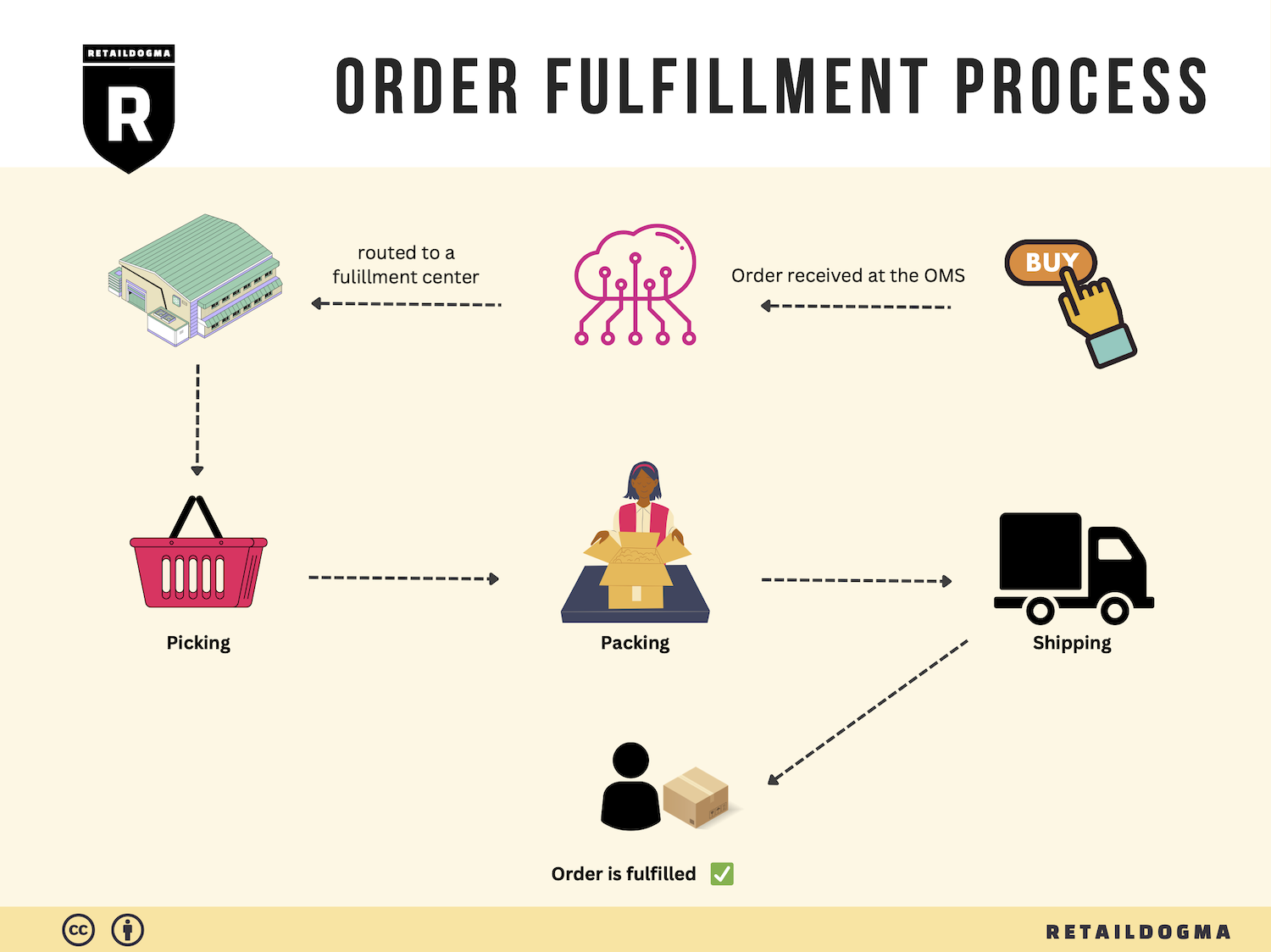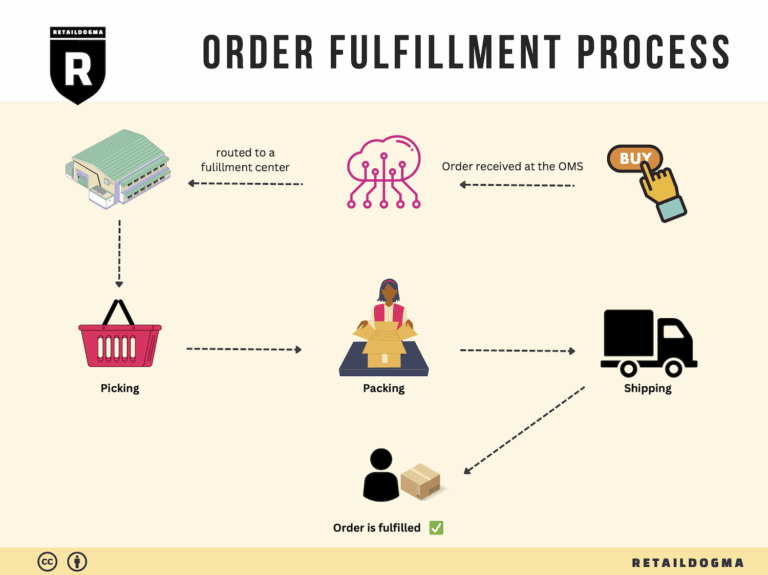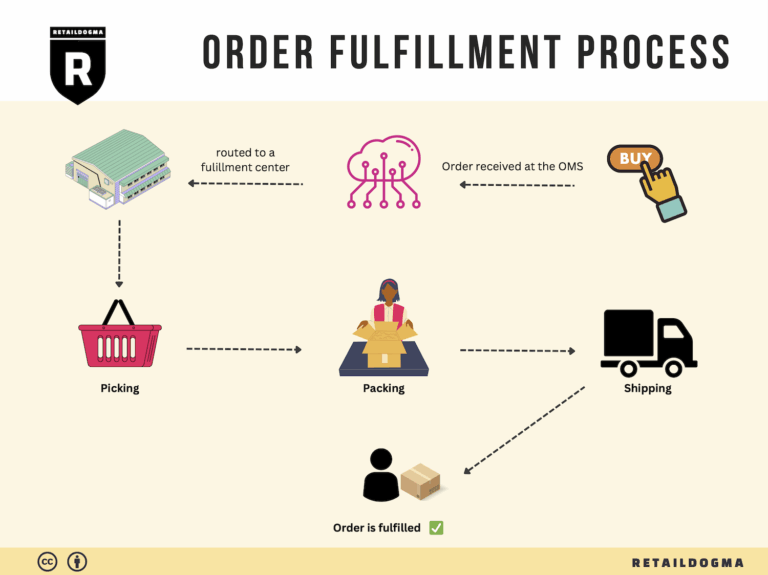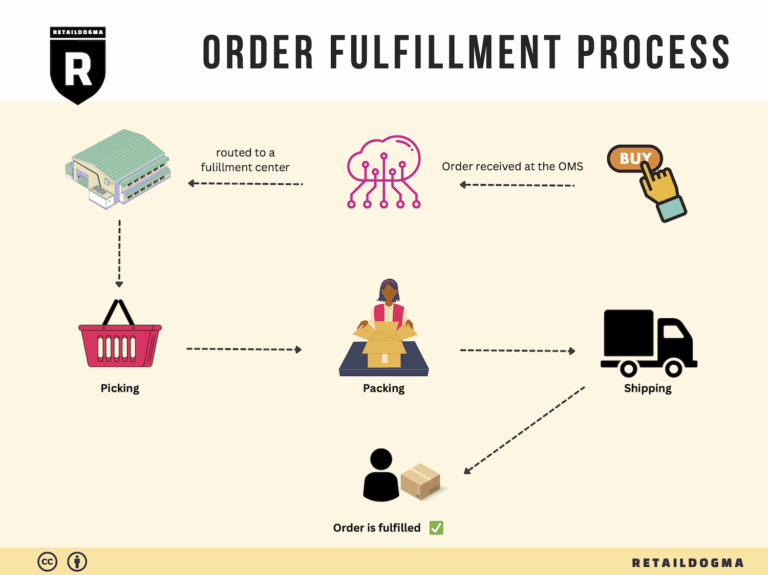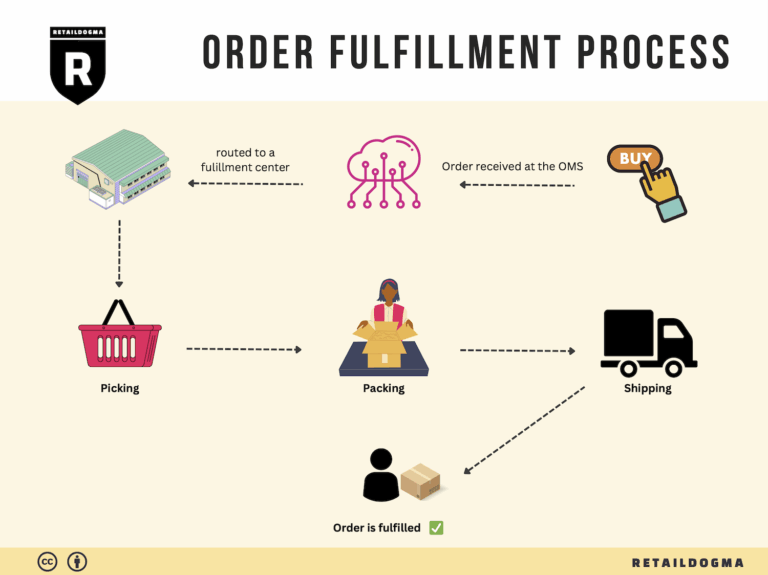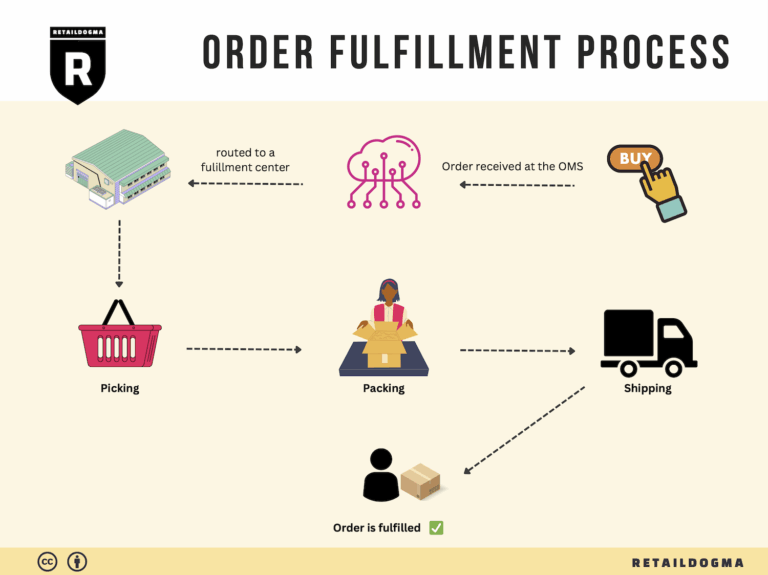What Is A Fulfillment Center? A Complete Guide (2025)
What is E-commerce Fulfillment? An Introduction for Growing Businesses
Understanding E-commerce Fulfillment
As an e-commerce business owner, you may find yourself overwhelmed by the logistics of packing and shipping orders. The thrill of generating sales can quickly turn into a daunting task when you realize that fulfilling those orders involves a complex web of processes. From managing inventory to ensuring timely delivery, the fulfillment journey is crucial for maintaining customer satisfaction and loyalty.
In simple terms, e-commerce fulfillment is the end-to-end process of getting a product from your online store into the hands of your customer. This encompasses everything from receiving and storing inventory, to processing orders, picking and packing items, and finally shipping them out. As your business grows, the intricacies of these operations can become more challenging, often impacting your bottom line and customer experience.
This guide aims to demystify e-commerce fulfillment by providing a comprehensive overview of the various fulfillment models available, such as Third-Party Logistics (3PL) and Fulfillment by Amazon (FBA). Understanding these models will help you determine which one aligns best with your business goals and operational needs.
Additionally, we will delve into the core services involved in fulfillment, including inventory management, order processing, shipping, and returns handling. Each of these elements plays a vital role in creating a seamless experience for your customers, and knowing how they interconnect can lead to better decision-making.
Choosing the right fulfillment partner is another crucial aspect we will cover. With a multitude of options available, it’s essential to evaluate potential partners based on their capabilities, technology, reliability, and pricing structures. This guide will provide you with the tools to make informed choices that can significantly impact your growth trajectory.
Finally, we will discuss the costs associated with different fulfillment strategies, helping you to understand where your money goes and how to optimize spending without sacrificing quality.
Our goal with this guide is to empower you, the growing business owner, to make smart, strategic decisions about your logistics. By streamlining your fulfillment processes, you can focus on what you do best—growing your brand and serving your customers. Let’s dive into the world of e-commerce fulfillment and discover how you can enhance your operational efficiency and customer satisfaction.
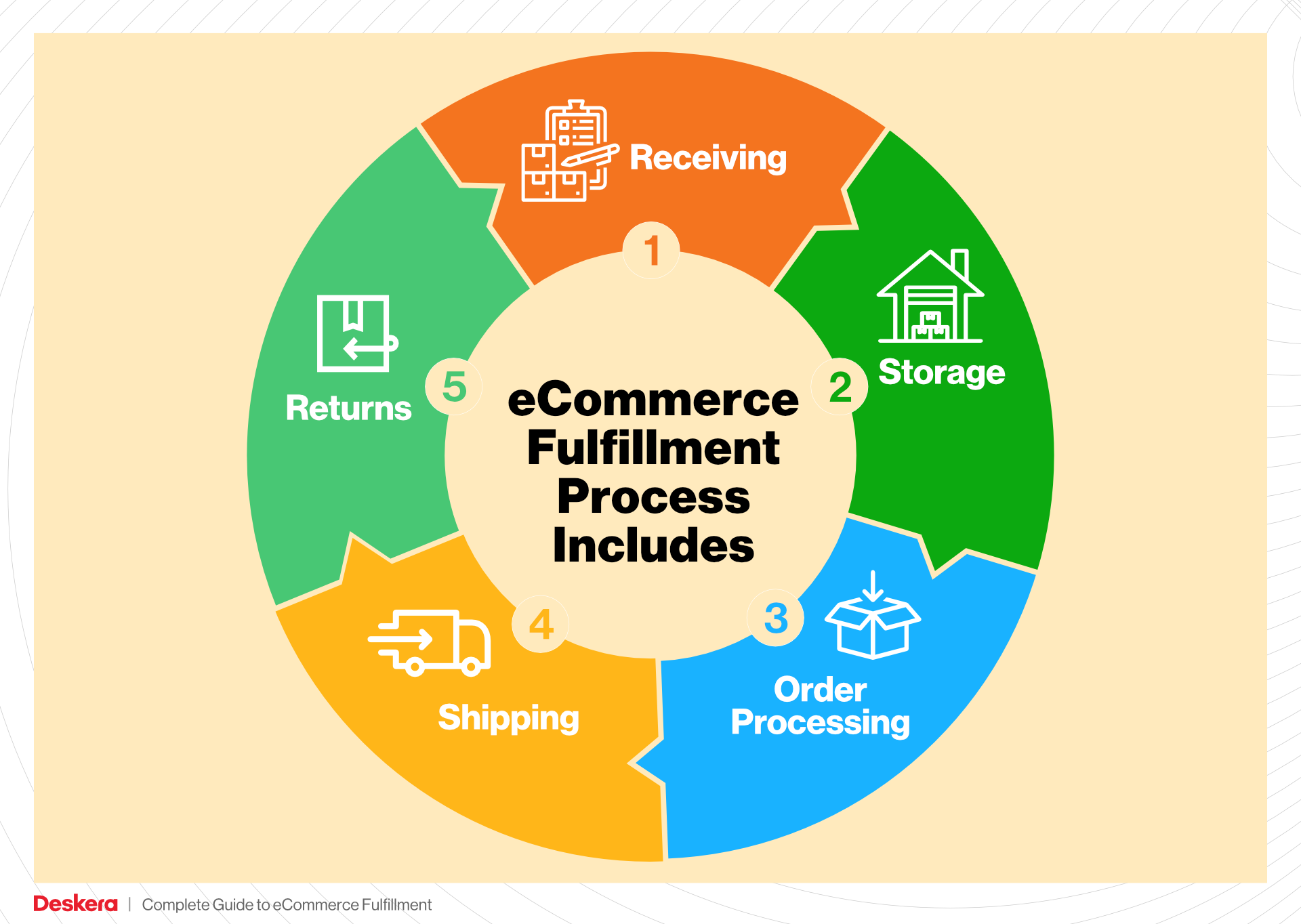
What You’ll Learn In This Guide
- What is E-commerce Fulfillment? An Introduction for Growing Businesses
- The Order Fulfillment Process: From ‘Buy’ Button to Customer’s Door
- Comparing Fulfillment Models: In-House vs. 3PL vs. Dropshipping
- A Deep Dive into Amazon FBA: Pros, Cons, and Who It’s For
- Core Services Offered by Fulfillment Centers
- How to Choose a Fulfillment Partner: A 6-Point Checklist
- Understanding Fulfillment Pricing: A Breakdown of Common Fees
- Frequently Asked Questions (FAQs) about Fulfillment
- Conclusion: Is Outsourcing Fulfillment the Right Move for Your Business?
- Important Disclaimer
The Order Fulfillment Process: From ‘Buy’ Button to Customer’s Door
1. Receiving Inventory
The order fulfillment process begins with receiving inventory, which is the critical first step in ensuring that the right products are available for your customers. When inventory arrives at your warehouse, it must be carefully checked against the purchase order to confirm accuracy. This involves verifying the quantities and SKUs (Stock Keeping Units) of the incoming products. Accurate receiving is essential not only for maintaining inventory integrity but also for preventing stock discrepancies that can lead to overselling or stockouts.
Using a Warehouse Management System (WMS) during this process allows businesses to efficiently log the received items, track their condition, and manage any discrepancies. Properly received inventory is the foundation of a smooth fulfillment process, as it ensures that the next steps can be executed without delays or errors. If the receiving process is flawed, it can disrupt the entire supply chain, leading to customer dissatisfaction and potential loss of sales.
2. Warehouse Storage
Once inventory is received, the next step is warehouse storage. This phase involves strategically placing products in designated locations within the warehouse. Effective storage solutions are vital for optimizing the picking process and ensuring efficient retrieval of products when orders are placed. Factors like item size, turnover rate, and handling requirements should guide the storage strategy.
Utilizing techniques such as slotting—where frequently picked items are placed closer to packing stations—can significantly reduce picking times. A well-organized warehouse layout not only enhances operational efficiency but also minimizes errors during the picking process. Maintaining accurate inventory data through your Inventory Management System (IMS) is crucial at this stage, as it provides real-time visibility into stock levels and locations, preventing costly stockouts and lost sales opportunities.
3. Order Picking
Order picking is the process of selecting the right products from storage to fulfill customer orders. Once an order is placed, a pick list is generated, detailing the items needed, their quantities, and their specific storage locations. This step is vital because accurate picking directly affects order accuracy and customer satisfaction.
To improve efficiency, warehouses often implement various picking strategies, such as batch picking, where similar orders are grouped to reduce travel time, or zone picking, where workers are assigned specific areas of the warehouse to streamline the process. The method chosen should align with the warehouse layout and order volume. Accurate picking is essential; mistakes at this stage can lead to incorrect shipments, returns, and ultimately, dissatisfied customers.
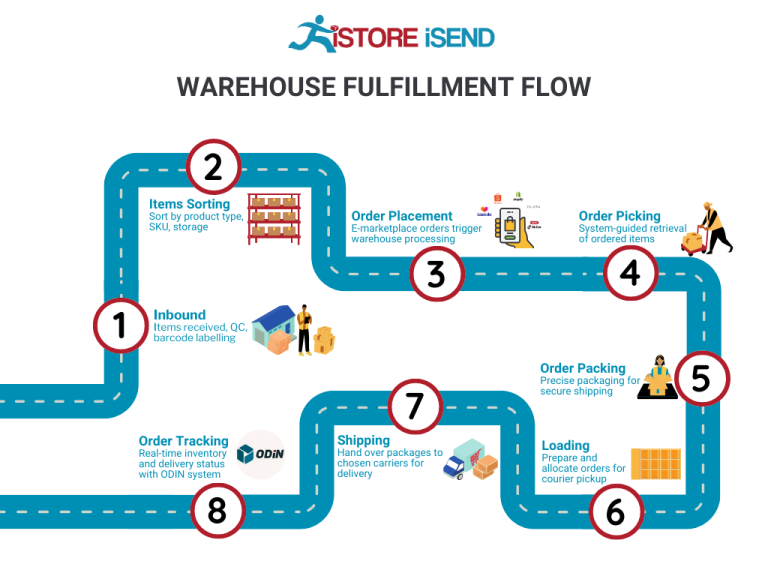
4. Order Packing
After items are picked, they move to the packing stage, where they are prepared for shipping. Packing is not merely about placing items in boxes; it involves ensuring that products are securely packed to withstand transit, thereby minimizing the risk of damage. This step is crucial for maintaining product quality and customer trust.
During packing, items are often scanned to confirm accuracy against the order. This is where businesses can also enhance the customer experience through branded packaging, eco-friendly materials, or personalized inserts. Effective packing not only protects items but can also reduce shipping costs through optimal use of space. A well-executed packing process can lead to fewer returns and higher customer satisfaction, reinforcing brand loyalty.
5. Shipping & Delivery
The final step in the order fulfillment process is shipping and delivery. Once an order is packed, it is handed off to a shipping carrier. The selection of the carrier is influenced by factors such as delivery speed, cost, and destination. Automated systems can assist in choosing the most cost-effective shipping option, ensuring that orders are dispatched in a timely manner.
This stage is critical for customer communication; providing tracking information and proactive updates helps manage customer expectations and builds trust. With 85% of shoppers indicating they won’t return to a retailer after a poor delivery experience, ensuring reliability in this phase is essential. A well-structured shipping and delivery process not only impacts customer satisfaction but also affects overall business profitability. Efficient logistics can lead to lower shipping costs and improved margins, making it a vital component of your fulfillment strategy.
Comparing Fulfillment Models: In-House vs. 3PL vs. Dropshipping
Fulfillment Models Comparison
| Model | Who Handles Inventory | Best For (Business Stage) | Key Advantage | Key Disadvantage |
|---|---|---|---|---|
| In-House Fulfillment | The business itself | Startups to small businesses | Greater control over processes | Higher operational costs and complexity |
| Third-Party Logistics (3PL) | A third-party provider | Growing to medium-sized businesses | Scalability and expertise in logistics | Less control over inventory and processes |
| Dropshipping | Supplier or manufacturer | Entrepreneurs and niche sellers | Low overhead and risk | Lower profit margins and reliance on suppliers |
In-House Fulfillment
In-house fulfillment refers to the process where a business manages its entire order fulfillment operations internally. This involves handling inventory, storage, picking, packing, and shipping using its own facilities and workforce. This model is particularly suitable for startups and small businesses that are just beginning to scale. The primary advantage of in-house fulfillment is the level of control it offers; businesses can directly oversee inventory management and fulfillment processes, allowing for quick adjustments and personalized customer service. Moreover, it can be cost-effective initially, as there are minimal upfront investments in third-party services. However, as order volumes grow, this model can become burdensome due to the increasing operational complexities and costs associated with warehousing, staffing, and technology infrastructure. Additionally, businesses may find it challenging to meet fluctuating demand, which can lead to inefficiencies and potential customer dissatisfaction.
Third-Party Logistics (3PL)
Third-party logistics (3PL) involves outsourcing fulfillment operations to a specialized logistics provider. This model is ideal for businesses that are expanding and experiencing growth beyond their internal capabilities. 3PL providers offer a range of services, including warehousing, inventory management, order processing, and shipping. One of the main advantages of utilizing a 3PL is scalability; businesses can quickly adjust their fulfillment capacities based on demand without the need for significant capital investment. Additionally, 3PL providers often have extensive expertise in logistics, which can help streamline operations and reduce shipping costs through established carrier relationships. However, this model does come with some trade-offs. Businesses may have less direct control over their inventory and fulfillment processes, which can lead to challenges in communication and transparency. Moreover, the cost structure of 3PL services can vary, and businesses must ensure that they are getting value for their investment.
Dropshipping
Dropshipping is a fulfillment model where the retailer does not hold inventory but instead transfers customer orders directly to a supplier or manufacturer, who then ships the products directly to the customer. This model is particularly appealing to entrepreneurs and niche sellers who want to minimize overhead and risk. The primary advantage of dropshipping is that it requires very little upfront investment; businesses can offer a wide range of products without needing to purchase inventory upfront. This model allows for flexibility and ease of entry into various markets. However, dropshipping also has its downsides. The most significant disadvantage is typically lower profit margins, as businesses often have to pay higher wholesale prices for products. Additionally, reliance on suppliers for inventory and fulfillment can lead to issues with stock availability, shipping times, and product quality, which can ultimately impact customer satisfaction. As such, businesses using dropshipping must be diligent in selecting reliable suppliers and managing customer expectations effectively.
Conclusion
Choosing the right fulfillment model is a critical decision that can significantly impact your e-commerce business’s efficiency and growth potential. In-house fulfillment offers control and cost-effectiveness for smaller operations but can become complex as volume increases. Third-party logistics provide scalability and expertise for growing businesses, though at the cost of some control. Dropshipping allows for a low-risk entry into the market but comes with challenges related to margins and supplier reliability. Ultimately, the best choice will depend on your business’s specific needs, resources, and long-term goals. As your business evolves, it may also be necessary to reevaluate your fulfillment strategy to ensure it aligns with your growth trajectory and customer expectations.
A Deep Dive into Amazon FBA: Pros, Cons, and Who It’s For
Understanding Fulfillment by Amazon (FBA)
Fulfillment by Amazon (FBA) is a service that allows e-commerce sellers to leverage Amazon’s extensive logistics network. With FBA, sellers send their products to Amazon’s fulfillment centers, where Amazon handles storage, packaging, shipping, and customer service on behalf of the sellers. This service not only streamlines the order fulfillment process but also provides sellers with access to Amazon’s vast customer base.
How FBA Works
-
Setting Up: Sellers create an Amazon seller account and enroll in the FBA program. They then list their products on Amazon and prepare them for shipment to Amazon’s fulfillment centers.
-
Shipping to Amazon: Sellers package their products according to Amazon’s guidelines and send them to designated fulfillment centers. Amazon provides specific instructions regarding labeling and packaging to ensure efficient processing.
-
Storage: Once the products arrive at Amazon’s warehouses, they are stored until sold. Inventory management is crucial, as sellers need to keep track of their stock levels to avoid stockouts or excess inventory.
-
Order Processing: When a customer places an order for an FBA product, Amazon picks, packs, and ships the product directly to the customer. This process is streamlined, allowing for quick delivery times.
-
Customer Service and Returns: Amazon handles all customer service inquiries related to FBA orders, including returns and refunds. This reduces the operational burden on sellers and enhances customer satisfaction.
Pros of Using FBA
1. Prime Eligibility
One of the most significant advantages of FBA is that it automatically qualifies products for Amazon Prime. This means that sellers can reach millions of Prime members who prefer fast, free shipping. By being part of the Prime program, sellers can increase their visibility and sales potential significantly.
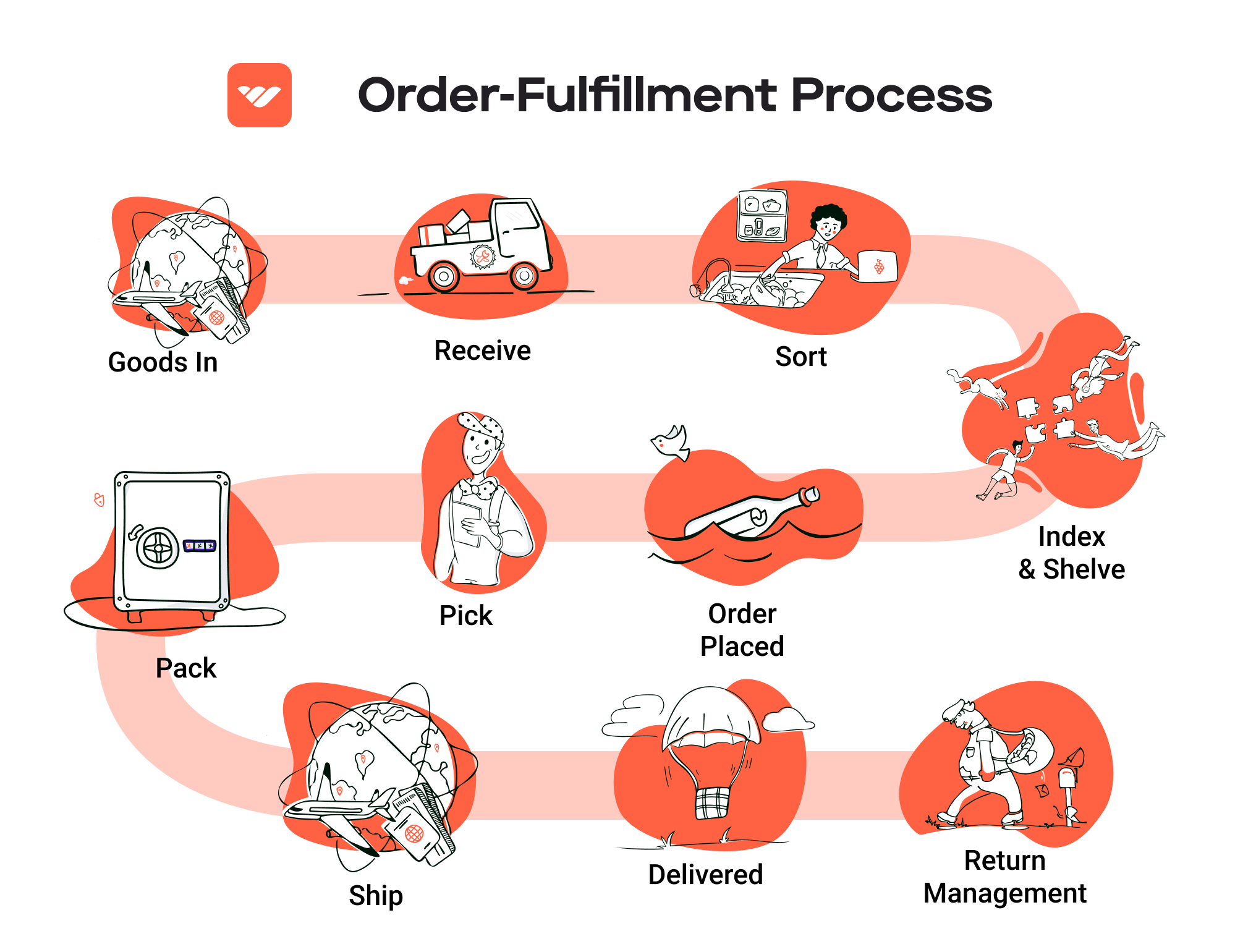
2. Customer Trust
Amazon is a trusted brand with a robust reputation for customer service. By using FBA, sellers can leverage this trust, as customers often feel more comfortable purchasing products that are fulfilled by Amazon. This can lead to higher conversion rates and repeat business.
3. Multi-Channel Fulfillment
FBA is not limited to sales on Amazon. Sellers can use Amazon’s fulfillment services for orders placed on other channels, such as their own websites or other e-commerce platforms. This flexibility allows businesses to streamline their logistics and manage inventory across multiple sales channels effectively.
4. Scalable Operations
FBA provides a scalable solution for growing businesses. As order volumes increase, sellers can rely on Amazon’s infrastructure to manage fulfillment without needing to invest heavily in their own logistics systems. This scalability allows businesses to focus on sales and marketing while Amazon handles the back-end operations.
5. Advanced Logistics
Amazon’s logistics capabilities are unmatched, with a vast network of fulfillment centers and sophisticated technology. This allows for efficient order processing, quicker delivery times, and reduced shipping costs through optimized routing and bulk shipping discounts.
Cons of Using FBA
1. High Fees
While FBA offers many advantages, it also comes with significant fees. Sellers must pay for storage, fulfillment, and additional services, which can eat into profit margins. Understanding the fee structure is crucial for sellers to ensure that FBA remains a viable option for their business.
2. Strict Inventory Rules
Amazon has strict policies regarding inventory management. Sellers must comply with these rules, including limits on storage space and requirements for maintaining inventory levels. Failure to adhere to these guidelines can result in additional fees or even suspension from the FBA program.
3. Commingling Risks
FBA uses a commingling method for inventory, meaning that products from different sellers may be stored together. While this can simplify logistics, it also poses risks. If another seller’s product is damaged or defective, customers may mistakenly receive it instead of the seller’s own product, leading to potential negative reviews and brand damage.
4. Loss of Control
Using FBA means that sellers relinquish some control over the fulfillment process. They must trust Amazon to handle packaging, shipping, and customer service, which can be challenging for businesses that prioritize brand-specific experiences.
5. Complicated Returns Process
While Amazon manages returns, the process can be complicated for sellers. Returned items may not always be in sellable condition, and managing the logistics of returns can become cumbersome, particularly if there are high return rates for certain products.
Who is FBA Best For?
Fulfillment by Amazon is particularly well-suited for:
-
Small to Medium-Sized Businesses: Businesses looking to scale without the overhead of managing their own fulfillment centers can benefit greatly from FBA. It allows them to focus on growth and customer acquisition.
-
Brands with High Sales Volume: Sellers who experience high sales volumes can take advantage of Amazon’s efficient logistics to meet demand without compromising on delivery times.
-
E-commerce Entrepreneurs: New entrepreneurs who are entering the e-commerce space can use FBA to simplify logistics, enabling them to concentrate on marketing and product development rather than fulfillment headaches.
-
Multi-Channel Sellers: Brands that sell across various platforms and need a centralized fulfillment solution will find FBA’s multi-channel capabilities beneficial.
In conclusion, while FBA offers numerous advantages that can help scale an e-commerce business, it also presents challenges that need to be carefully evaluated. Understanding both the pros and cons is essential for making an informed decision about whether FBA aligns with your business goals and operational strategy.
Core Services Offered by Fulfillment Centers
Inventory Management & Warehousing
Inventory management and warehousing are fundamental services offered by fulfillment centers that enable e-commerce businesses to streamline their operations. This service involves the systematic tracking of inventory levels, orders, sales, and deliveries. Fulfillment centers utilize sophisticated Warehouse Management Systems (WMS) to ensure that every product is accounted for and stored efficiently.
Benefits:
1. Optimized Storage Solutions: Fulfillment centers often employ advanced storage strategies, such as dynamic slotting, to maximize space utilization and minimize retrieval times. This means that products can be stored in locations that are most efficient for picking, reducing the time spent searching for items.
-
Real-Time Inventory Tracking: With integrated inventory management systems, businesses gain visibility into stock levels across multiple channels. This helps prevent stockouts and overstock situations, enabling better decision-making regarding reorders and sales strategies.
-
Scalability: As e-commerce businesses grow, their inventory needs can fluctuate significantly. Fulfillment centers provide the flexibility to scale storage capacity up or down without the overhead costs associated with maintaining a large warehouse.
-
Reduced Operational Costs: By outsourcing inventory management and warehousing, e-commerce businesses can save on labor, rent, and utilities, allowing them to focus their resources on core activities such as marketing and product development.
Pick and Pack Services
Pick and pack services are a critical component of the fulfillment process, involving the selection of products from the warehouse shelves (picking) and packaging them for shipment (packing). Fulfillment centers employ various picking strategies—such as batch picking, zone picking, and wave picking—to optimize efficiency based on order volume and warehouse layout.
Benefits:
1. Increased Efficiency: By utilizing specialized picking methods, fulfillment centers can significantly reduce the time required to fulfill orders. This efficiency translates into faster order processing and shipping times, enhancing customer satisfaction.
-
Accuracy and Quality Control: Most fulfillment centers implement rigorous quality control measures during the pick and pack process. This includes scanning items before packing to ensure accuracy, which reduces the likelihood of returns due to incorrect shipments.
-
Customized Packaging Options: Fulfillment centers often provide branded packaging solutions that enhance the unboxing experience for customers. This attention to detail can help reinforce brand identity and improve customer loyalty.
-
Cost-Effective Solutions: By outsourcing pick and pack services, e-commerce businesses can reduce labor costs and avoid the need to invest in packing materials and equipment. Fulfillment centers benefit from bulk purchasing, often passing savings on to their clients.
Kitting and Assembly
Kitting and assembly services involve the preparation of products that need to be bundled together for sale or require assembly before they can be shipped to customers. This can include anything from assembling furniture to creating gift sets.
Benefits:
1. Streamlined Processes: By outsourcing kitting and assembly to a fulfillment center, e-commerce businesses can streamline their operations. This allows them to focus on their core competencies while ensuring that products are assembled correctly and efficiently.
-
Improved Product Offerings: Kitting can create unique product offerings that might attract more customers. For instance, bundling complementary items can enhance perceived value, encouraging larger purchases.
-
Space Optimization: Kitting and assembly can often take up considerable space in a warehouse. By using a fulfillment center’s services, businesses can free up valuable space for other inventory or operations.
-
Reduced Lead Times: When kitting and assembly processes are handled by experienced fulfillment centers, the time it takes to get products ready for shipping is significantly reduced. This can lead to faster delivery times and improved customer satisfaction.
Returns Management (Reverse Logistics)
Returns management, or reverse logistics, is a vital service that involves handling product returns from customers. An efficient returns process can enhance customer experience and loyalty, as well as provide valuable insights into product performance.
Benefits:
1. Enhanced Customer Experience: A well-organized returns management system makes it easy for customers to return items, which can improve satisfaction and retention rates. Fulfillment centers often provide easy-to-use return portals and automated return labels, simplifying the process for customers.
-
Cost Efficiency: Managing returns in-house can be labor-intensive and costly. Fulfillment centers can streamline the returns process, reducing labor costs and improving turnaround times for restocking items.
-
Data Insights: By analyzing return patterns, fulfillment centers can provide e-commerce businesses with insights into product quality and customer preferences. This data can be invaluable for making informed decisions about inventory management, product design, and marketing strategies.
-
Sustainability Opportunities: Many fulfillment centers are now incorporating sustainable practices into their returns processes, such as recycling or donating returned items. This not only enhances a brand’s image but can also reduce waste and improve overall operational efficiency.
By leveraging these core services, e-commerce businesses can enhance their operational efficiency, improve customer satisfaction, and position themselves for scalable growth in a competitive marketplace.
How to Choose a Fulfillment Partner: A 6-Point Checklist
Location & Warehouse Network
The geographic location of your fulfillment partner’s warehouses plays a crucial role in your shipping efficiency and costs. A well-distributed warehouse network can significantly reduce shipping times and expenses, particularly for businesses looking to serve a wide customer base.
Why It Matters:
A strategically located warehouse can ensure faster delivery times, which directly impacts customer satisfaction and retention. Additionally, proximity to major transportation hubs can lower shipping costs.
Questions to Ask:
– Where are your warehouses located, and how do these locations align with our target market?
– What is your average shipping time to key regions?
– Can you provide details about your distribution network and any plans for expansion?
Technology & Integrations
In today’s digital landscape, the technology a fulfillment partner uses can either facilitate or hinder your operations. An effective fulfillment partner should offer robust technology solutions that integrate seamlessly with your e-commerce platform.
Why It Matters:
Advanced technology can streamline order processing, inventory management, and tracking, reducing the risk of errors and improving overall efficiency. Real-time data access allows you to make informed decisions about inventory and fulfillment.
Questions to Ask:
– What technology platforms do you use for order management, inventory tracking, and reporting?
– How do you handle integrations with popular e-commerce platforms and marketplaces?
– Can you provide real-time data access and reporting capabilities?
Specializations (e.g., Cold Storage, Oversized Items)
Not all fulfillment partners are equipped to handle every type of product. Depending on your business model, you may need a partner that specializes in certain areas, such as cold storage for perishable goods or handling oversized items.
Why It Matters:
Choosing a partner with the right specialization can ensure that your products are stored and shipped correctly, maintaining quality and compliance with industry regulations.
Questions to Ask:
– Do you have experience handling our specific product type (e.g., perishables, hazardous materials, oversized items)?
– What specialized equipment or facilities do you have to accommodate these products?
– How do you ensure compliance with relevant regulations for specialized products?
Scalability & Capacity
As your business grows, your fulfillment needs will change. It’s essential to partner with a fulfillment provider that can scale operations in line with your growth trajectory.
Why It Matters:
A partner that can accommodate fluctuations in order volume ensures that you can meet customer demand without facing delays or increased costs. Scalability is crucial for avoiding the pitfalls of outgrowing your fulfillment capabilities.
Questions to Ask:
– How do you handle seasonal spikes in order volume?
– What is your current capacity, and how quickly can you scale up operations if needed?
– Do you have contingency plans in place for unexpected surges in demand?
Pricing and Contracts
Understanding the pricing structure of potential fulfillment partners is critical for maintaining profitability. Transparent pricing models help you assess the total cost of fulfillment and avoid hidden fees.
Why It Matters:
The pricing model should align with your budget and business objectives. Contracts should be flexible enough to adapt to changing business conditions without incurring excessive penalties.
Questions to Ask:
– Can you provide a detailed breakdown of your pricing structure, including any additional fees?
– What is your policy on contract length and termination?
– Are there volume discounts or incentives for long-term partnerships?
Customer Support & Reviews
The level of customer support provided by a fulfillment partner can significantly impact your operations. A partner that prioritizes communication and service can help resolve issues quickly, minimizing disruptions.
Why It Matters:
Responsive customer support can be a game changer in logistics. When problems arise—such as shipping delays or inventory discrepancies—having a partner that can quickly address these issues is invaluable.
Questions to Ask:
– What customer support options do you offer (e.g., dedicated account manager, 24/7 support)?
– Can you provide references or case studies from current clients?
– How do you handle disputes or issues that may arise during the fulfillment process?
By following this checklist, e-commerce business owners and operations managers can make informed decisions when selecting a fulfillment partner. Each of these criteria plays a vital role in ensuring that your logistics operations are efficient, cost-effective, and capable of meeting customer expectations as your business scales.
Understanding Fulfillment Pricing: A Breakdown of Common Fees
Initial Setup Fees
When partnering with a fulfillment provider, the initial setup fees are often the first costs you encounter. These fees cover the onboarding process, which may include account setup, system integration, and initial inventory counts. The cost can vary significantly based on the complexity of your operations and the technology involved. Some providers may charge a flat fee, while others may base their pricing on the volume of products you are bringing into their warehouse or the number of SKUs you need to manage.
To calculate initial setup fees, providers typically consider:
– Integration Requirements: The level of technical support needed to connect your e-commerce platform with their systems.
– Inventory Levels: The number of SKUs and the total volume of products you will be storing and fulfilling.
– Training Needs: Any necessary training for your team to effectively use the provider’s systems.
Receiving Fees
Receiving fees are charged each time your inventory is delivered to the fulfillment center. This fee covers the costs associated with unloading, inspecting, and logging your products into the warehouse management system (WMS).
The calculation for receiving fees can depend on several factors:
– Volume of Inventory: Larger shipments may incur lower per-unit costs due to economies of scale.
– Complexity of Inventory: Products that require special handling, such as fragile items or hazardous materials, may incur higher fees.
– Labor Costs: The time and effort required for the receiving process can also influence the fee, especially if it involves additional quality checks or sorting.
Storage Fees (per pallet/bin)
Storage fees are charged for the physical space your inventory occupies in the fulfillment center. These fees are typically calculated on a monthly basis and can be assessed per pallet, bin, or square footage, depending on the provider’s pricing structure.
Factors influencing storage fees include:
– Inventory Turnover: Higher turnover rates can lead to lower storage costs since products spend less time in the warehouse.
– Storage Type: Different areas of the warehouse may have varying costs associated with them, such as climate-controlled storage for sensitive items.
– Duration of Storage: Longer storage durations can accumulate additional fees, particularly if inventory remains stagnant for extended periods.
Pick & Pack Fees (per item/order)
Pick and pack fees are charged for the labor involved in selecting items from storage and preparing them for shipment. This fee can be calculated per item or per order, depending on the fulfillment provider’s pricing model.
Key considerations for calculating pick and pack fees include:
– Order Complexity: More complex orders that require multiple SKUs or special packaging may incur higher fees.
– Volume of Orders: Higher order volumes may lead to lower per-order costs, as fulfillment centers can streamline their processes.
– Packaging Requirements: Custom packaging or additional materials can add to the overall pick and pack fee.
Shipping Fees
Shipping fees represent the costs associated with transporting orders to customers. These fees can vary widely based on factors such as destination, shipping method, and package dimensions.
When calculating shipping fees, providers typically consider:
– Carrier Rates: Different carriers have varying rates, and providers may pass these costs directly to you or offer negotiated rates based on volume.
– Service Level: Options such as standard, expedited, or same-day delivery will impact the shipping costs.
– Weight and Dimensions: Heavier or larger packages will generally incur higher shipping costs due to increased carrier fees.
Tips for Getting an Accurate Quote
-
Provide Detailed Information: When requesting quotes, offer comprehensive details about your business model, including your order volume, product types, and any special handling requirements.
-
Ask About All Fees: Ensure that you inquire about all potential fees, including those not immediately apparent, such as returns processing or customer service costs.
-
Compare Multiple Providers: Gather quotes from several fulfillment centers to understand the market rates and find a partner that offers the best value for your specific needs.
-
Negotiate Terms: Don’t hesitate to negotiate terms and fees, especially if you have a solid understanding of your expected order volumes and growth projections.
-
Consider Long-Term Costs: Look beyond initial fees and evaluate the total cost of fulfillment over time, including scalability and potential discounts for increased volumes.
By understanding these common fulfillment pricing models and their calculations, you can make informed decisions that enhance your e-commerce operations and ultimately contribute to your business’s growth.
Frequently Asked Questions (FAQs) about Fulfillment
1. What is retail fulfillment?
Retail fulfillment refers to the entire process of receiving, processing, and delivering customer orders from an online or physical store to the end customer. It encompasses inventory management, order processing, picking and packing, shipping, and handling returns. Effective retail fulfillment is crucial for customer satisfaction and operational efficiency.
2. What’s the difference between a warehouse and a fulfillment center?
A warehouse is primarily used for storage of goods, while a fulfillment center focuses on the entire order fulfillment process. Fulfillment centers are equipped with technology and systems designed to handle order processing, picking, packing, and shipping, often providing additional services like returns management. In contrast, warehouses may not have the same level of operational capabilities.
3. What is a 3PL?
A 3PL, or third-party logistics provider, is a company that offers logistics and supply chain services to businesses. This can include warehousing, order fulfillment, shipping, and returns management. Partnering with a 3PL allows businesses to leverage expertise and infrastructure, enabling them to scale operations without investing in their own logistics capabilities.
4. How much do fulfillment services cost?
Fulfillment service costs vary based on several factors, including order volume, storage space required, shipping options, and additional services such as returns processing. Typically, businesses can expect to pay for storage fees (based on cubic feet), order processing fees (per order), and shipping costs (based on weight and destination). It’s essential to evaluate potential providers and negotiate rates to find a solution that aligns with your budget and needs.
5. What are the key components of the fulfillment process?
The fulfillment process includes five key components:
1. Receiving and Storage: Inventory is received, checked, and stored.
2. Order Processing: Orders are captured and verified for inventory availability.
3. Picking and Packing: Items are picked from storage and securely packed for shipment.
4. Shipping and Delivery: Packed orders are handed off to carriers for delivery.
5. Returns: Returned items are processed, inspected, and either restocked or disposed of.
6. How can I improve my fulfillment efficiency?
To enhance fulfillment efficiency, consider implementing the following strategies:
– Leverage technology: Utilize warehouse management systems (WMS) and order management systems (OMS) for real-time inventory tracking and order processing.
– Optimize warehouse layout: Design your warehouse for efficient picking paths and minimize travel time.
– Automate processes: Use automation tools for order processing, picking, and packing to reduce manual errors and speed up operations.
– Regularly review performance metrics: Analyze key performance indicators (KPIs) to identify bottlenecks and areas for improvement.
7. What are common challenges in retail fulfillment?
Common challenges in retail fulfillment include:
– Inventory management: Maintaining accurate stock levels across multiple sales channels.
– Shipping delays: Unexpected shipping issues can impact delivery times and customer satisfaction.
– Returns processing: Managing returns efficiently to minimize costs and maintain customer trust.
– Scalability: Adjusting fulfillment operations to accommodate fluctuating order volumes, especially during peak seasons.
8. How do I choose the right fulfillment model for my business?
Selecting the right fulfillment model depends on your business size, product type, order volume, and growth plans. Consider the following:
– In-house fulfillment: Best for small businesses or those with low order volumes who want control over the process.
– 3PL partnerships: Ideal for businesses looking to scale quickly without significant investment in logistics infrastructure.
– Hybrid models: Combining in-house and outsourced solutions can provide flexibility and cost savings.
9. What role does customer communication play in fulfillment?
Effective customer communication is crucial in fulfillment as it helps manage expectations and builds trust. Providing timely updates on order status, shipping notifications, and tracking information can enhance the customer experience. Proactive communication about potential delays or issues also fosters transparency and customer loyalty.
10. How can I handle returns effectively?
To manage returns effectively, establish a clear and simple return policy that provides customers with straightforward instructions. Streamline the returns process by using a returns management system that allows customers to initiate returns easily. Analyze return data to identify patterns and address underlying issues, such as product quality or fulfillment errors, to reduce future returns.
Conclusion: Is Outsourcing Fulfillment the Right Move for Your Business?
Evaluating the Benefits of Outsourcing Fulfillment
As e-commerce businesses grow, the complexities of order fulfillment can become overwhelming. Outsourcing fulfillment can provide significant advantages that are crucial for scaling operations effectively. First and foremost, partnering with a fulfillment service allows business owners to save valuable time. By delegating logistics tasks such as inventory management, packing, and shipping, you can focus on core business activities like marketing, product development, and customer engagement.
Additionally, outsourcing fulfillment offers scalability that in-house operations may struggle to match. A reliable fulfillment partner is equipped to handle fluctuations in order volume, whether due to seasonal demand spikes or promotional events. This flexibility ensures that your business can grow without the burden of investing in additional warehouse space, technology, or personnel.
Expertise is another key benefit of working with a fulfillment provider. These partners specialize in logistics and have the experience and resources to optimize the supply chain, improve delivery times, and reduce costs. They stay updated on industry best practices and emerging technologies, which can enhance your overall customer experience and retention.
However, the choice of fulfillment partner is critical to your success. Not all providers are created equal, and selecting the right one can mean the difference between seamless operations and logistical nightmares. Look for a partner that aligns with your business goals, offers transparent communication, and demonstrates a proven track record of reliability.
Take Action
To determine if outsourcing fulfillment is the right move for your business, conduct an audit of your current shipping processes. Assess your operational efficiency, cost structures, and customer satisfaction levels. This exercise will provide valuable insights into whether a fulfillment partner could enhance your business’s growth trajectory. Don’t hesitate to explore options that could streamline your operations and elevate your customer experience.
Important Disclaimer
⚠️ Important Disclaimer
The information in this guide is for educational purposes. Fulfillment services, pricing, and platform features change frequently. Always conduct your own due diligence and consult with providers directly before making business decisions.
